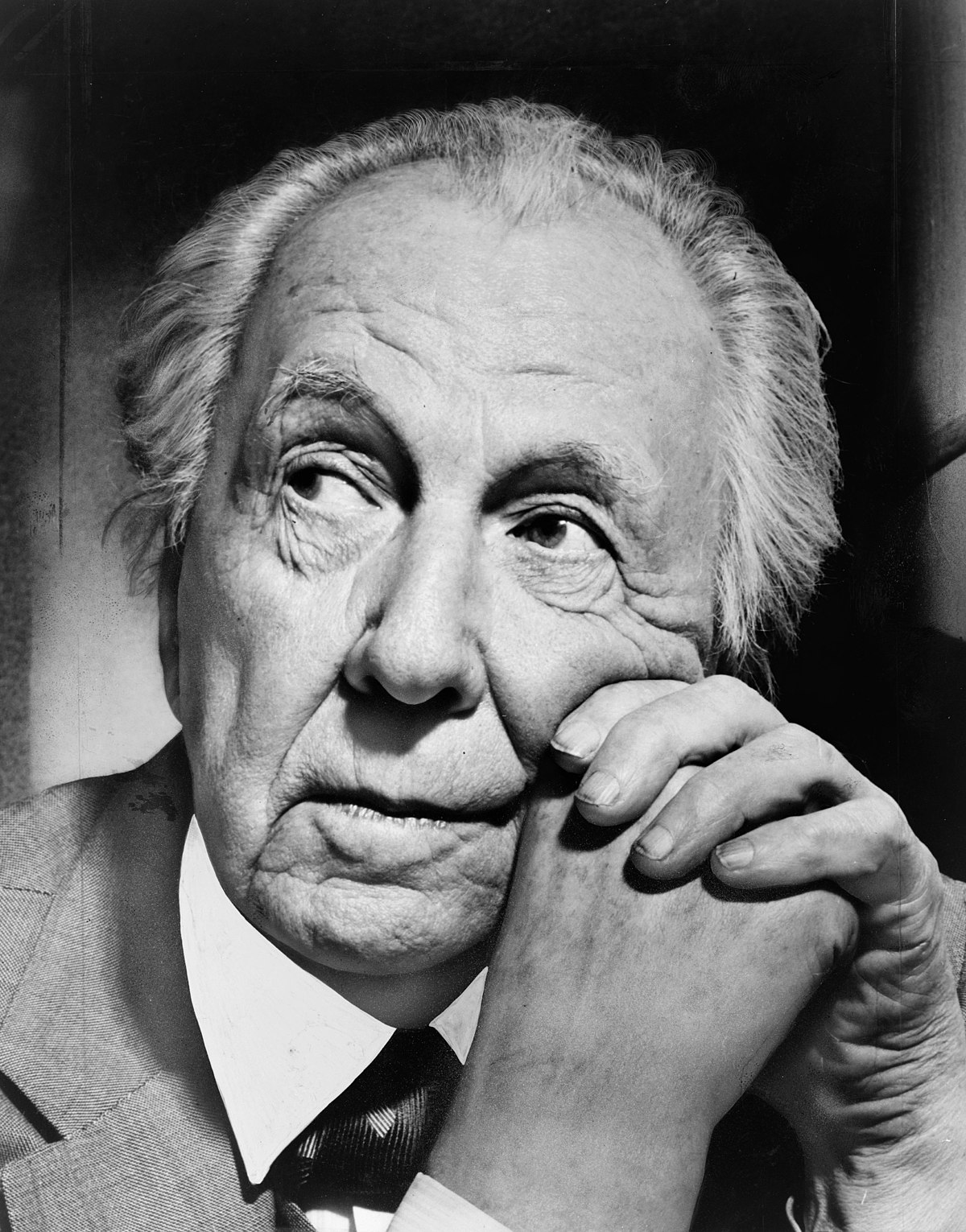
Frank Lloyd Wright: Architectural Visionary of the 20th Century
Embark on a Journey into the World of Frank Lloyd Wright
Frank Lloyd Wright, a name synonymous with architectural brilliance, continues to inspire generations.
As the 20th century’s paramount architect, Wright’s legacy stands tall, transforming city skylines and residential landscapes alike. But who was this man, and how did he ascend to such prominence? Dive in, and let’s uncover the marvel that is Frank Lloyd Wright.
Transitioning from mere blueprints to towering edifices, his work showcases a unique blend of innovation and artistry. So, gear up for an enlightening expedition into his world, charting the evolution of his groundbreaking designs and enduring impact. Join us, as we traverse through the golden chapters of architectural history, led by none other than Frank Lloyd Wright himself.
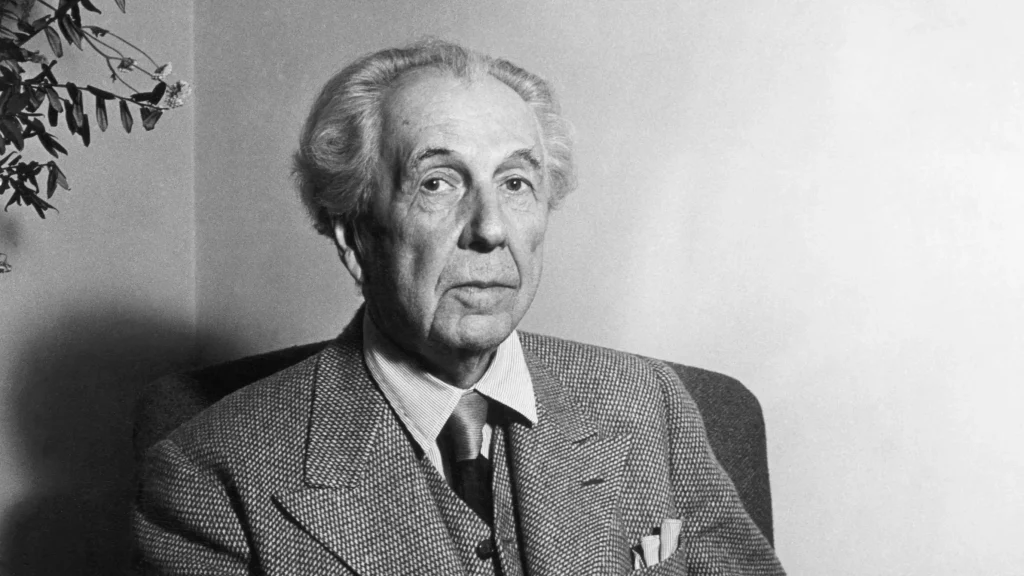
Frank Lloyd Wright: Childhood Dreams to Architectural Prowess
Frank Lloyd Wright’s journey commenced in the rolling hills of Richland Center, Wisconsin, in 1867. Born into an era of transformation, his surroundings played a pivotal role in shaping his perceptions. Early on, Wright’s mother, Anna Lloyd Jones, recognized and nurtured her son’s potential. Interestingly, she furnished his nursery with geometric blocks called Froebel Gifts. These tools, designed to foster an understanding of form and creativity, undoubtedly sparked his architectural inclinations.

Transitioning into his teenage years, Wright worked alongside his uncle on the family farm. This hands-on experience grounded him in nature’s principles, a theme recurrently reflected in his future works. By 1887, a young and ambitious Wright headed to Chicago. Here, he sought opportunities in the epicentre of American architecture.
The city, rebounding from the Great Chicago Fire, was ripe for innovation. Wright quickly found employment with the renowned firm of Adler & Sullivan. Under Louis Sullivan’s mentorship, he imbibed the ethos of “form follows function.” This mantra, coupled with his childhood learnings, would guide Frank Lloyd Wright’s vision, setting the stage for a revolution in design.

The Prairie School: Pioneering a New Architectural Dialogue
Frank Lloyd Wright, having assimilated foundational knowledge in Chicago, soon began cultivating his unique style. The Prairie School, an architectural movement primarily in the American Midwest, emerged as the canvas for Wright’s visions. But what set this style apart? The emphasis on horizontal lines and flat or hipped roofs with broad overhanging eaves aimed to mirror the natural elements and landscapes of the U.S. prairies.
Transitioning from the ornate European designs that dominated the era, Wright championed simplicity. His homes, often termed ‘Prairie Houses’, exhibited strong horizontal lines and earthy colours. These structures harmoniously integrated with their surroundings, embodying a sense of organic unity. One can’t overlook iconic masterpieces like the Robie House in Chicago, where Wright’s mature Prairie style reached its peak.
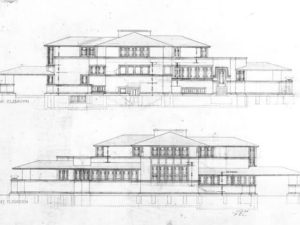
But it wasn’t just about aesthetics. Frank Lloyd Wright was meticulous about the interiors, ensuring they resonated with the exteriors. Open floor plans, central chimneys, and clerestory windows became hallmarks of his designs. Additionally, his custom-designed furniture and fixtures further emphasized the holistic approach he took with every project.
As the Prairie School movement flourished, so did Wright’s reputation. Not just an architect, he emerged as an avant-garde visionary, challenging conventions and continuously redefining the boundaries of design. In embracing the Prairie School’s tenets, Wright wasn’t just building houses; he was crafting living experiences, reshaping how homeowners related to their spaces.
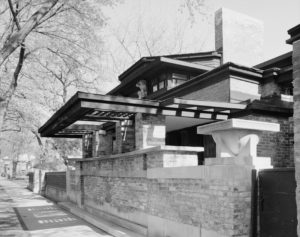
Usonian Houses: Democratizing Design for the Modern American
As the 20th century progressed, so did Frank Lloyd Wright’s aspiration to revolutionize housing for the average American. Enter the Usonian house, a term Wright coined, reflecting his vision for a distinctly American architectural identity. Transitioning from the grandeur of the Prairie style, Usonian designs focused on affordability without compromising aesthetic value.

Central to Usonian houses was their accessibility. Wright believed in the democratic essence of architecture, asserting that everyone deserved a beautifully designed home. To achieve this, he employed cost-effective materials, open floor plans, and flat roofs. Additionally, basements and attics, typical in many homes, were eliminated in favour of simplicity and function.
Frank Lloyd Wright’s signature touch was evident in every Usonian home. Large windows, connecting interiors with the external environment, fostered a harmonious relationship between the dwelling and nature. Radiant floor heating, another innovative feature, provided comfort and optimized space by eliminating traditional radiators.

Transitioning through various designs, it became clear that Usonian houses weren’t merely architectural projects for Wright; they were a mission. The Jacobs House in Madison, Wisconsin, stands testament to this vision. Crafted in 1937, this house seamlessly blended affordability with iconic design, setting a benchmark for Usonian architecture.
Frank Lloyd Wright’s commitment to Usonian principles showcased his versatility. From the Grand Prairie houses to the practical Usonian homes, Wright’s journey underscored his belief in the symbiotic relationship between design, nature, and humanity. His Usonian legacy, now scattered across the U.S., serves as a constant reminder of architecture’s potential to enhance everyday life.
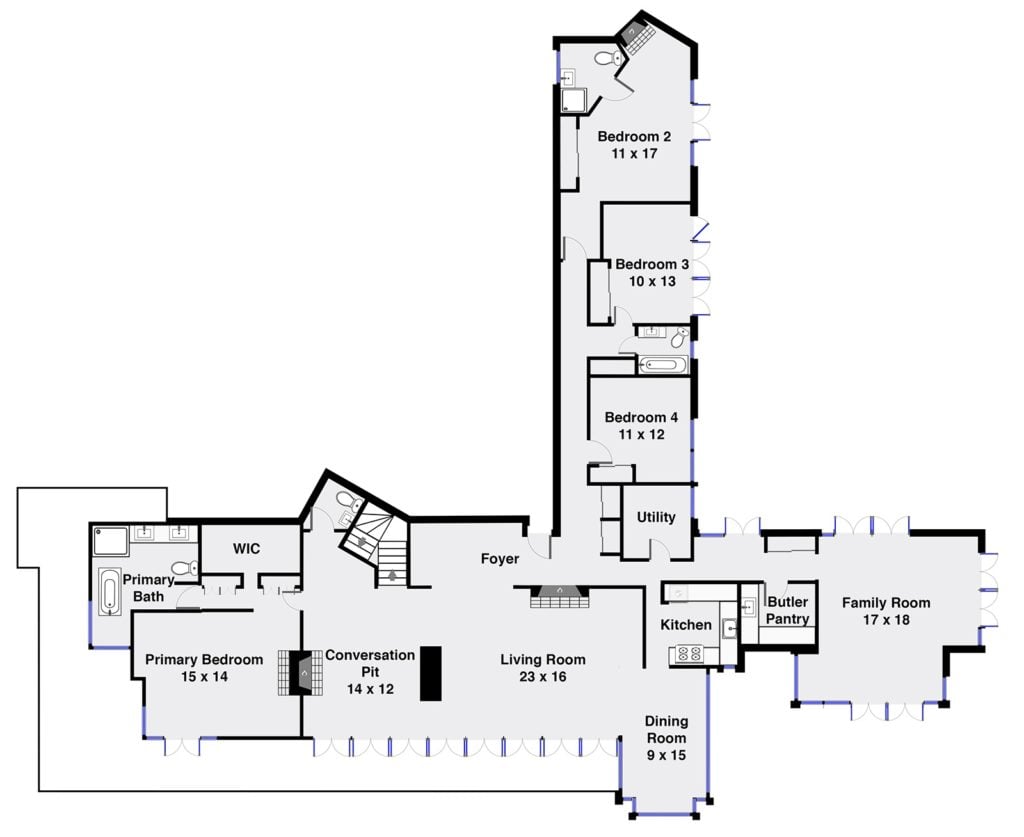
Innovative Architectural Techniques of Frank Lloyd
Frank Lloyd Wright wasn’t merely content with crafting visually stunning edifices. He was, at his core, a relentless innovator, always eager to explore new materials and construction techniques. Transitioning through various stages of his career, this tenacity became more evident, laying the groundwork for some of the 20th century’s most iconic structures.
Central to Wright’s innovation was his philosophy of “organic architecture”. He believed that structures should emerge naturally, almost as if they were an integral part of their environment. This ideology demanded a profound understanding of materials and their innate properties. For instance, in his famed Fallingwater, he used local sandstone and reinforced concrete to craft cantilevered balconies that seemed to float above the water.
Furthermore, Wright was among the pioneers in using precast concrete blocks as a primary construction material. Transitioning away from traditional brick and mortar, he saw these blocks, termed “textile blocks”, as a way to integrate ornamentation and structure seamlessly. The Ennis House in Los Angeles stands as a testament to this innovative approach.
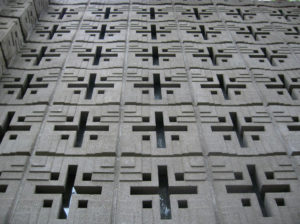
But perhaps the most striking facet of Wright’s techniques was his dedication to custom solutions. Instead of opting for off-the-shelf components, he often designed bespoke furniture, fixtures, and even windows to resonate with the architectural essence of each project. Such meticulous attention to detail ensured that every space he crafted provided a unique experience.
In essence, Frank Lloyd Wright’s innovative techniques weren’t just about aesthetics or novelty. They stemmed from a deeper understanding of architecture’s role in society. For Wright, every brick, beam, or window wasn’t just a construction element; it was a piece of a larger narrative, seamlessly intertwining form, function, and philosophy.
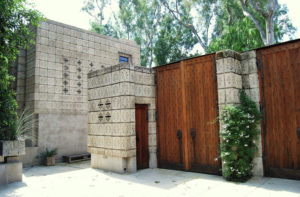
Iconic Projects of Frank Lloyd Wright
Frank Lloyd Wright’s legacy is peppered with projects that continue to captivate architects, students, and enthusiasts worldwide. While it’s challenging to condense his monumental portfolio into a handful of structures, certain works stand out, reflecting his evolving genius. Transitioning through different phases of his career, let’s explore these paragons of architectural innovation.
Fallingwater, Pennsylvania
Undoubtedly one of the most acclaimed houses of the 20th century, Fallingwater is a masterclass in harmony. Built over a waterfall, this residence encapsulates Wright’s belief in organic architecture. Every element, from the cantilevered terraces to the strategic openings, emphasizes a symbiotic relationship with nature.
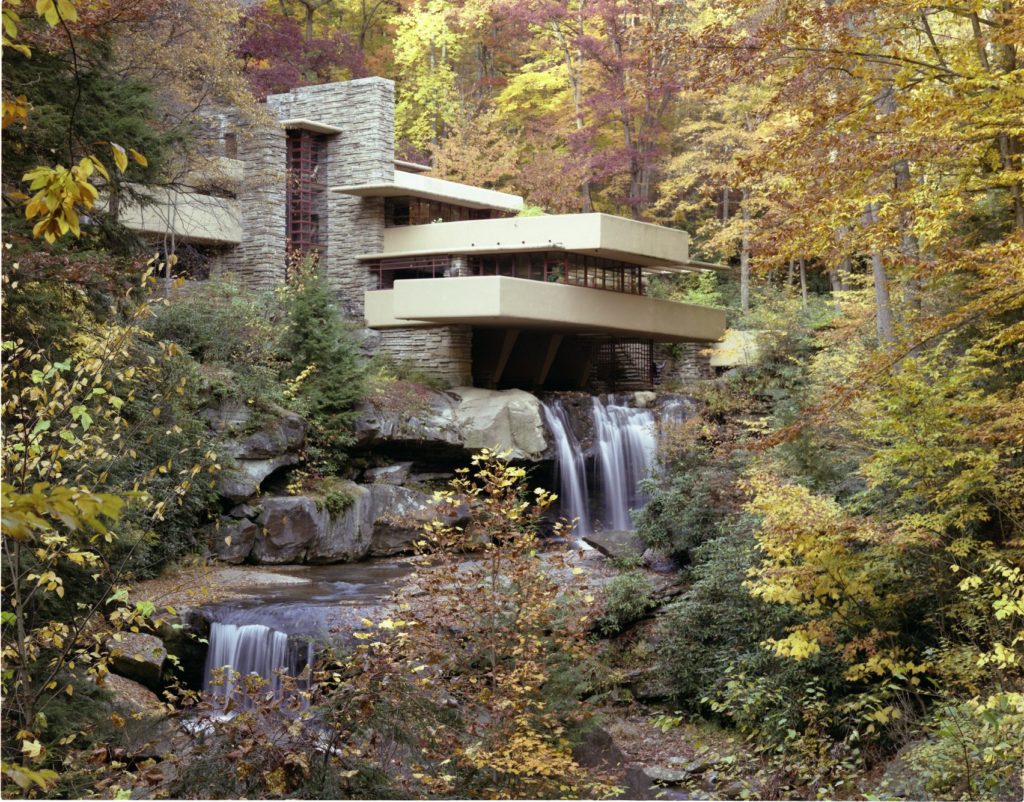
Guggenheim Museum, New York
Transitioning from residential to public architecture, the Guggenheim Museum showcases Wright’s prowess in crafting iconic spaces. Its spiral design and uninterrupted interior gallery space challenge traditional museum layouts, offering a holistic art viewing experience.
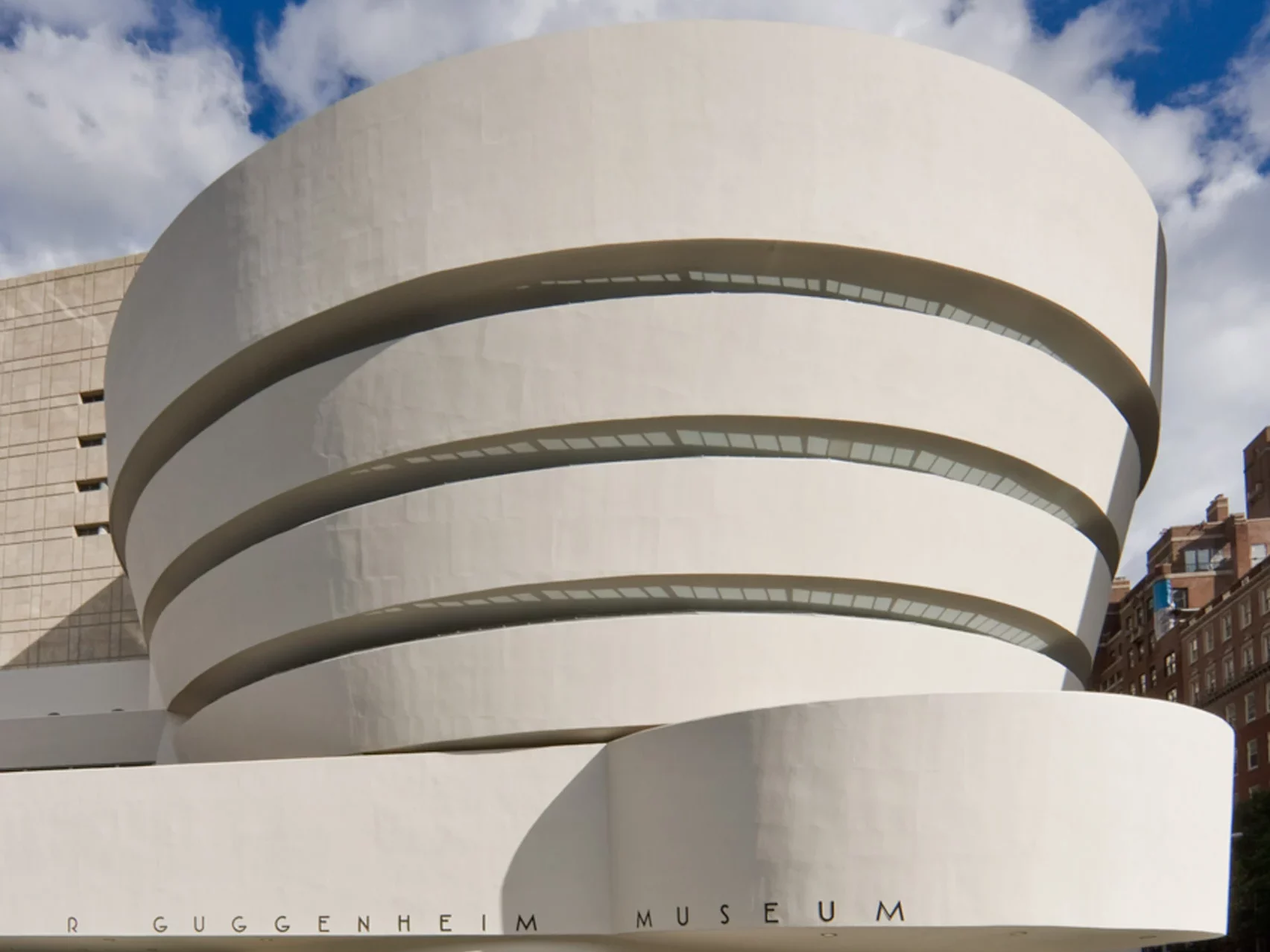
Taliesin and Taliesin West
These twin masterpieces, located in Wisconsin and Arizona respectively, served not just as Wright’s residences but also as his architectural laboratories. Here, he experimented with designs, materials, and techniques, further refining his architectural language.

Unity Temple, Illinois
An epitome of modern religious architecture, Unity Temple underscores Wright’s ability to marry spirituality with design. With its reinforced concrete construction and a focus on natural light, the temple offers a serene, contemplative space, seamlessly blending form and function.

Celebrating an Epoch of Architectural Brilliance
Navigating the vast tapestry of Frank Lloyd Wright’s life and achievements underscores a transformative era in architectural history. His designs, while rooted in the past, continue to inspire and resonate with contemporary sensibilities. As we reflect on his enduring impact, it becomes evident that Wright’s legacy transcends bricks and mortar. It embodies a philosophy, an unwavering belief in the harmony between humanity and its environment. As we transition into the future of architecture, armed with technological advancements and new materials, the principles championed by Wright serve as foundational pillars, reminding us of the timeless nature of true genius.
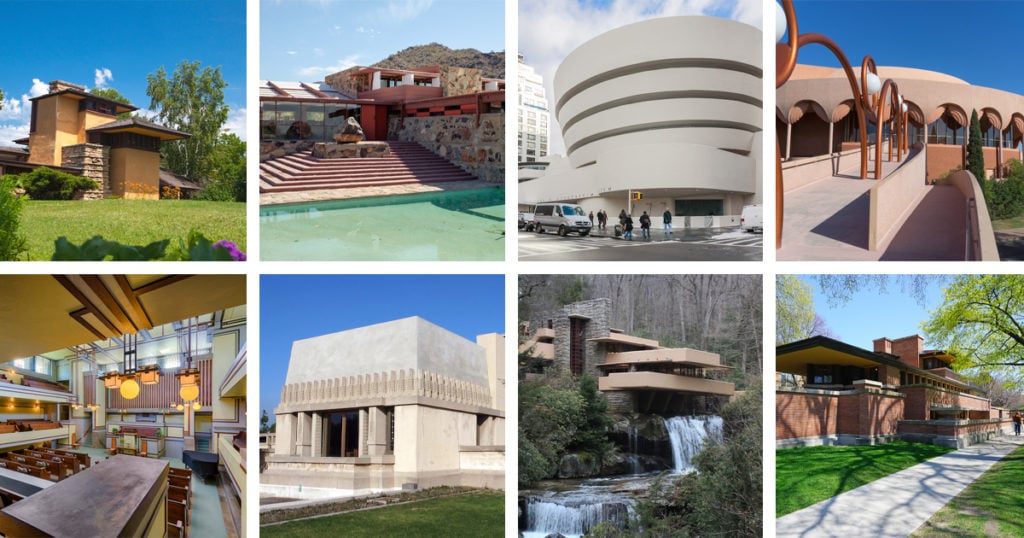
Frequently Asked Questions
- Wright introduced the Prairie School style, characterized by horizontal lines and flat roofs.
- He designed the famous Fallingwater House, which stands atop a waterfall.
- Wright’s career spanned over 70 years, during which he designed more than 1,000 structures.
- He was an influential educator, establishing the Taliesin Fellowship.
- Despite facing personal and professional challenges, Wright’s influence remains enduring in modern architecture.
Frank Lloyd Wright’s work had a profound impact on society by challenging traditional architectural norms and pushing for designs that were in harmony with their environment. His structures, often ahead of their time, showcased how architecture could be both functional and artistic, influencing urban planning and the way people perceive the relationship between buildings and their surroundings.
Frank Lloyd Wright’s emphasis on harmony with nature, open floor plans, and innovative design solutions have significantly influenced modern architectural design principles and practices.
Frank Lloyd Wright’s architectural style is often referred to as “organic architecture.” This concept emphasizes harmony between human habitation and the natural world through architectural design. Wright believed in designing structures that were in harmony with humanity and its environment.
Frank Lloyd Wright’s legacy is preserved in the many structures he designed that still stand today. He is remembered as a pioneer of modern architecture and as an innovator who challenged conventional architectural norms. His principles of organic architecture continue to influence architects globally.
